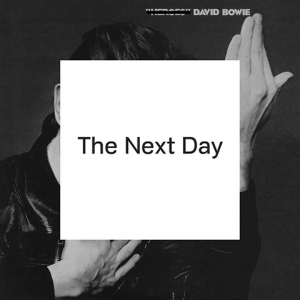Scary Monsters (and Super Creeps) was released in the second week of September 1980. Preceded by the hugely successful single ‘Ashes to Ashes’, Scary Monsters hit #1 on the UK album charts on 27th September. It also made #1 in Australia and peaked just outside the Top 10 in the US.
Bowie’s fourteenth studio album is full of contradictions, managing to look simultaneously backwards and forwards. There are sing-along hits and there is saw-toothed noise. The guitar in one of those sing-along hits screams in pain. The Pierot of the cover is an illustration while the shadow is real. This sad and slightly spooky clown is Bowie’s last assumed persona but perhaps the artifice is crumbling. Something ambivalent, something vulnerable peeps from behind the mask…
Listen to me – don’t listen to me [‘Fashion’]
I’ve never done good things, I’ve never done bad things [‘Ashes to Ashes’]
On the back cover are images from the three albums of the Berlin period. But it is the 80s now, the past is fading to grey. Although only sixteen months have elapsed since Lodger, the last of those albums, it seems more. This new decade jerks and spasms with the energy of suppressed rage, brilliantly captured in Robert Fripp’s serrated guitar. Bowie’s singing on Scary Monsters is committed. It’s angry and immediate with a vitality he seemed to find difficult to sustain thereafter.
Presence and absence permeate Scary Monsters. From the opening noises – what’s going on there? – there is dislocation and confusion, ‘tension and fear’. What is the Japanese woman saying in ‘It’s no game’? Is life really as inexplicable and unnatural as walking ‘Up the hill backwards’? Who is touched and who is alarmed by the madness of ‘Scary Monsters (And Super Creeps)’? Oh, and what are we to make of the coping strategy of ‘Ashes to Ashes’? Narcotics as a way to avoid… what? Madness? Reality? Here’s advice delivered with melancholy dread: head for space kids, you’ll never come down. And if that ain’t enough, there is always the fascist ‘Fashion’ of the disco. ‘It’s loud and it’s tasteless’ and you just can’t stop tapping your feet.
So that is Side One covered and what a truly great album side it is.
Side Two is solid but certainly not dazzling, perhaps because it is even grimmer lyrically than the first. ‘Teenage Wildlife’ has the narrator (‘David’) shunning the role of elder; ‘don’t ask me’. The subject of ‘Scream like a baby’ is imprisoned, perhaps by the state (have those ‘goon squads’ arrived in town?), perhaps in a psychiatric facility. Things are just as oppressive in Tom Verlaine’s ‘Kingdom Come’; hard labour and the promise of release only in death. In ‘Because you’re young’ an older observer looks at the young and laments ‘these pieces are broken’. Dance and dream is the strategy, escape reality. In the end ‘It’s no game’. Musically the song is less urgent than it’s album-opening incarnation, though lyrically things are still bad. Real bad.
One of the odd things about Scary Monsters is that when you look at the album – Bowie’s striking flame-hair on the front and that sexy off the shoulder glimpse on the back – you just don’t think ‘desperation, decay, despair’. Even after listening to the album you are more likely to saunter off for a cocktail singing ‘Fa Fa Fashion’ than move to a hovel on the edge of Lake Despond.
It is an odd sensation which reminded me of the disjunction between the mournful reverie of 2013’s pre-album video ‘Where are we now’ and the shadow-boxing energy of the subsequent album. I loved how the cover played with presence and absence, past and present, overlaying The Next Day on ‘Heroes’. If we are heroes just for one day, what happens the next day?
David Bowie is an artist whose manipulation of image, media and music is complex and endlessly fascinating. What, I’ve been wondering, if his next project was to give The Next Day treatment to Scary Monsters? What would that look like? It is, after all, quite a while since we’ve heard from Ground Control.








Really interesting take on a LP that I confess I never had much time for when I owned it. I loved Ziggy & Aladdin too much to focus on what happened afterwards for years; although Low is one I now love unreservedly. Maybe I’m grown up enough for it now.
Scary seemed an embodiment of the 80s, flash and surface, but with real cracks beneath the surface if you took the time to look hard. Clever.
Like I said, a really good incisive review Mr VC.
LikeLike
It’s true that those catchy singles obscured both their own bleakness and the tone of the album. Isn’t it great to revisit something and find more (rather than less)? For me Fripp’s vicious angular guitar is still a highlight.
Thanks for the response, J.
LikeLike
Really like your observation re: his latest album’s cover: “I loved how the cover played with presence and absence, past and present, overlaying The Next Day on ‘Heroes’. If we are heroes just for one day, what happens the next day?” Very insightful. Is it heresy to say that my only Bowie holding is a greatest hits compilation? I suspect it is. Fascinating man…always keeping things interesting, musically and visually.
LikeLike
Thanks for conversing, JDB. No heresy committed. In Bowie’s case a ‘hits’ compilation will give you much fun and a wonderful snapshot of a chameleon talent (used as a title for one comp) who always kept one arm firmly round the waist of popular acceptance. But the albums are often wonderful too. At least, up to this one anyway.
LikeLike
[…] David Bowie “Ashes to Ashes” [1980] Vinyl Connection article here. […]
LikeLike
[…] From which Bowie song does the lyric “Waiting at the lights” […]
LikeLike